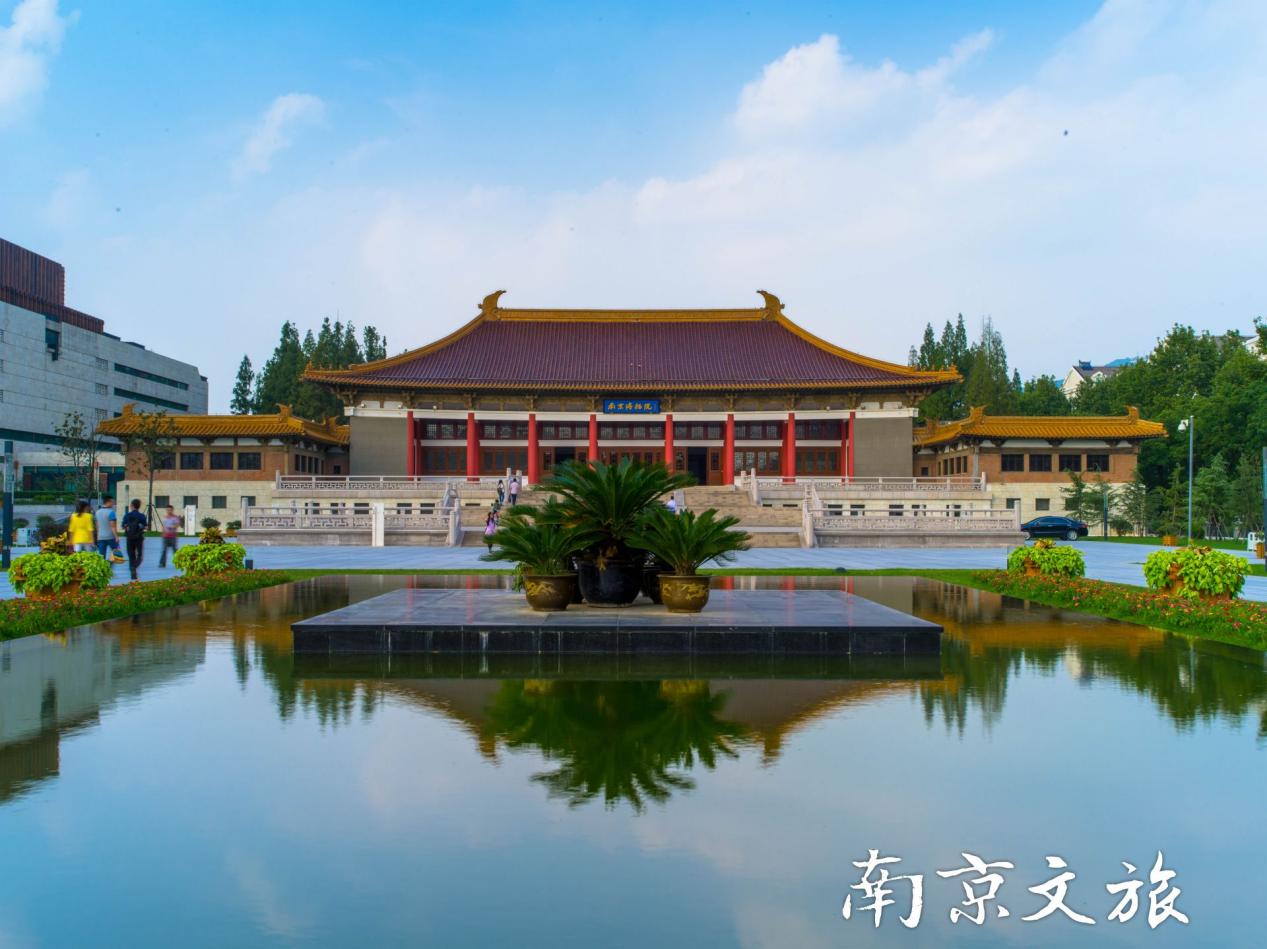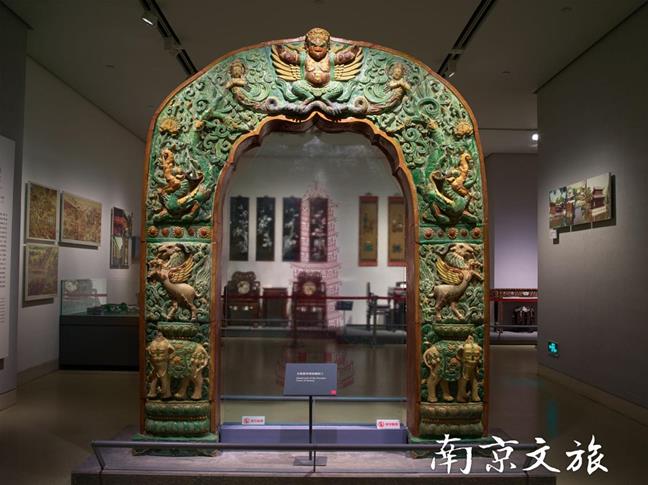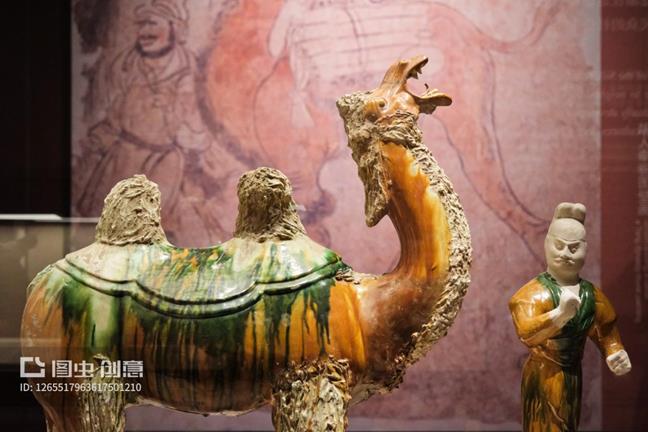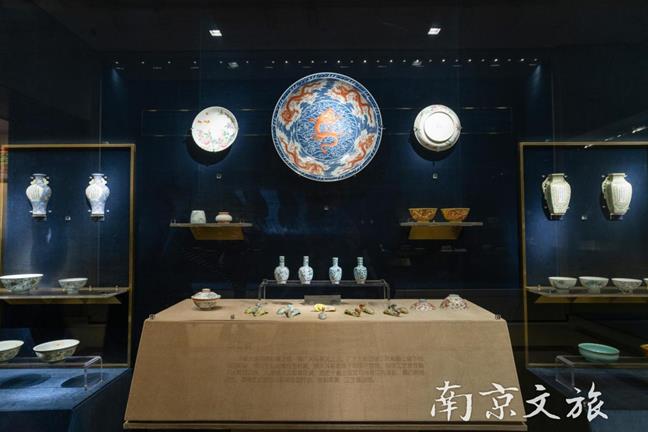Nanjing Museum
Nanjing is a solemn city that boasts luxury and elegance as it was the ancient capital of the Six Dynasties and the home to royal families. In the warm winter sun, this strong atmosphere permeates every corner of the city. Picking up the fragments of old days and exploring ancient stories ought to be one of the most romantic things to do in the warm winter sun in Nanjing.
A museum carries numerous moments and stories of the past. Today, let's walk into the History Gallery of the Nanjing Museum with the company of warm sunshine, and have a glimpse of the old days of this city.
(Photo source: Nanjing Municipal Administration of Culture and Tourism)
The Nanjing Museum is one of the three major museums in China, with over 430,000 pieces (sets) of collections gathered in the country or in the Jiangsu region from the Paleolithic Age to the contemporary era. There are palace relics and archaeological findings, and some collections were solicited or donated from the society. The Nanjing Museum, thanks to the masterpieces and treasures of various dynasties it collects, is referred to as a huge treasure trove of Chinese culture and art. The Nanjing Museum, which is grand in scale, includes one museum and six galleries. It is also the earliest museum created in China.
Its main structure (the History Gallery) adopts the architectural style of the Liao Dynasty: yellow glazed tiles, curved eaves slightly upward, as well as simple and robust arches under the roof, solemn and grand. The pretty eaves add a touch of vitality to the structure, perfectly presenting the grandeur and image of Nanjing, and making the structure a striking and enjoyable scenery in the east of the city.
(Photo source: https://699pic.com/)
The phase-II structure, adhering to the concept of "filling in gaps, integrating, and constructing new structures", elevates the Liao-style main hall by three meters using suspension lifting technology to highlight and strengthen the main position of the old hall. It forms a pattern of "one museum and six galleries" together with the renovated Arts Gallery, the newly built Special Exhibitions Gallery, the Republic of China Gallery, the Digital Gallery, and the Intangible Cultural Heritage Gallery.
The structures of the Nanjing Museum are mainly gray and white, supplemented by dark red lines and dots with flame patterns, as well as the retro-style treatment of the surfaces of gray and white stones. As such, the overall rough and wild architectural style reveals the gentleness of a watertown. The overall architecture not only retains traditional elements but also endows it with a modern atmosphere, achieving a harmonious integration and complementation between antiquity and modern technology.
The core of the Nanjing Museum lies in its main gallery (the History Gallery) which was designed by renowned architect Xu Jingzhi and modified by the master architect Liang Sicheng. This magnificent gallery is full of the beauty of palace buildings and all kinds of splendor of the Jiangsu region thanks to its carved beams and painted rafters.
(Photo source: Nanjing Municipal Administration of Culture and Tourism)
The gallery provides six exhibition areas, including "Prehistoric Period", "Age of Early States", "Vitalization of the Six Dynasties", "Jianghuai Plain in the Song-Yuan Period", and "Flourishing Age of the Jiangnan Region", to comprehensively present the development process of ancient civilization in the Jiangsu region.
The Jiangsu region rose and thrived on account of water. The gifts of nature have created a rich variety of resources in Nanjing. In the "Prehistoric Period" exhibition area, ancient fossils such as sea lilies, mammoths, and megaloceros are resented to tell the stories of the diverse flora and fauna that once lived on this land where rivers and seas intersect.
Humans have begun their activities in the Jiangsu region since the emergence of Homo erectus in Nanjing 350,000 years ago. The "Age of Early States" exhibition area displays the development of a rice culture that emerged 8,000 years ago, from meals to tomb collections, and from various jade artifacts (such as the man-bird-beast accessory) and potteries to bronze ware. as well as the more colorful cultural relics from the Spring and Autumn Period to the Western Han and Eastern Han Dynasties.
As one of the important vassal kingdoms during the Western Han and Eastern Han Dynasties, Jiangsu has witnessed a large number of precious cultural relics unearthed from various vassal tombs, for which Jiangsu is regarded as a treasure trove of the Han culture that is mainly carried by the production and decoration of copper and jade objects such as silver thread jade clothing and lacquerware. The decorative patterns on the lacquerware in the Han Dynasty are characterized by flexibility and gorgeousness. In Exhibition Hall 3 "The Han Dynasty and Legends of Kingdoms", these cultural relics have not carried any deformation or cracking after more than 2,000 years.
Exhibition Hall 4 is the "Vitalization of the Six Dynasties" exhibition area of the History Gallery. With the population migrating southward, Nanjing became the capital of the Six Dynasties. The culture of the Six Dynasties flourished in Jiangsu and resulted in Jinling's rise. Jiangsu's story entered a splendid chapter in the Sui and Tang Dynasties. Variously shaped pottery figurines and Tang tri-color glazed ceramics as well as the Beijing-Hangzhou Grand Canal related cultural relics share with us the peaceful and colorful entertainment life of those days.
(Photo source: https://699pic.com/)
The Song Dynasty relied on the literati to govern the country, for which a lot of literati were cultivated, and abundant literati calligraphy and painting works, as well as tea, alcohol, food, flower arranging, and other forms of culture the literati fond of were created. The culture of tea, alcohol, poems, and songs has uplifted the story of Nanjing to a climax. All the forms of culture displayed in the "Jianghuai Plain in the Song-Yuan Period" exhibition area show off their charms. During the Song and Yuan Dynasties, Nanjing became the hub of the national textile and cotton textile industry and maintained this position until the Ming and Qing Dynasties.
In the "Flourishing Age of the Jiangnan Region" exhibition area, we can see Jiangsu's social and economic development was unprecedented, with the rise of towns and cities, a large population, convenient transportation, and prosperous business and trading. At that time, Jiangsu's agriculture, water conservancy, silk and cotton textile, and salt-making industries were leading in China. During the Ming and Qing Dynasties, Nanjing's architectural technologies for city walls, palaces, temples, and Jiangnan gardens, as well as its shipbuilding industry, were leading in the country. Jiangsu became the center of calligraphy and painting in China, with numerous renowned artists and exquisite works. Literary creation reached its peak, with the emergence of masters such as Shi Nai'an, Wu Cheng'en, and Cao Xueqin. Nanjing was also one of the craft hubs in China. The city was regarded as a leader of workmanship thanks to Nanjing Yunjin Embroidery, Yixing Purple Sand, Yangzhou Lacquerware, and Suzhou Jade and Embroidery.
(Photo source: Nanjing Municipal Administration of Culture and Tourism)
The History Gallery presents Jiangsu's civilization history over the past 50 centuries for us to appreciate the magnificent Chinese culture and the gorgeous chapters of Nanjing's story. It is the greatest romance in winter.






